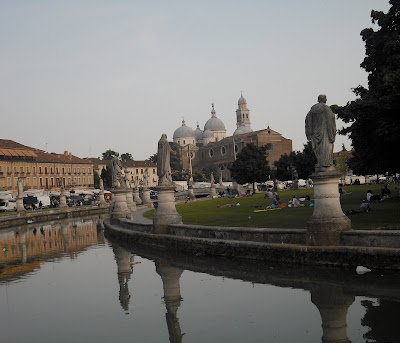



Padua is a fine old town with a long history. It was important in Roman times but was completely destroyed in the 7th century. It survived several ups and downs. The heart of the old town has winding, arcaded streets. I took the quick, three-hour walking tour. The most important site, the Scrovegni Chapel with its Giotto frescoes, I will not get to see. One needs to get tickets beforehand. It's a pity because I adore Giotto. I have seen his other magnum opus in Assisi. The photos show a typical street, the famous Prato della Valle with the basilica of Santa Giustina, and the 13th century basilica of San Antonio. The latter includes the tomb and various relics of St. Anthony (who was from Padua). The relics are housed in a separate chapel, totally over-the-top Baroque. To the Roman Catholics ostentation equals veneration. The church is quite impressive, though it is a goulash of styles. Santa Giustina also houses relics of various worthies, especially the corpse of Saint Luke. He was buried in Greece, but his coffin was 'miraculously' unearthed next to the church centuries ago and the then pope declared it authentic (and how the hell would he know?) The gullible need their relics, I suppose, and the church has a donation box by every single one of them.
Padua also boasts one of the oldest universities in the world. It is a mere 800 years old and counts Galileo Galilei as one of its former faculty.
No comments:
Post a Comment